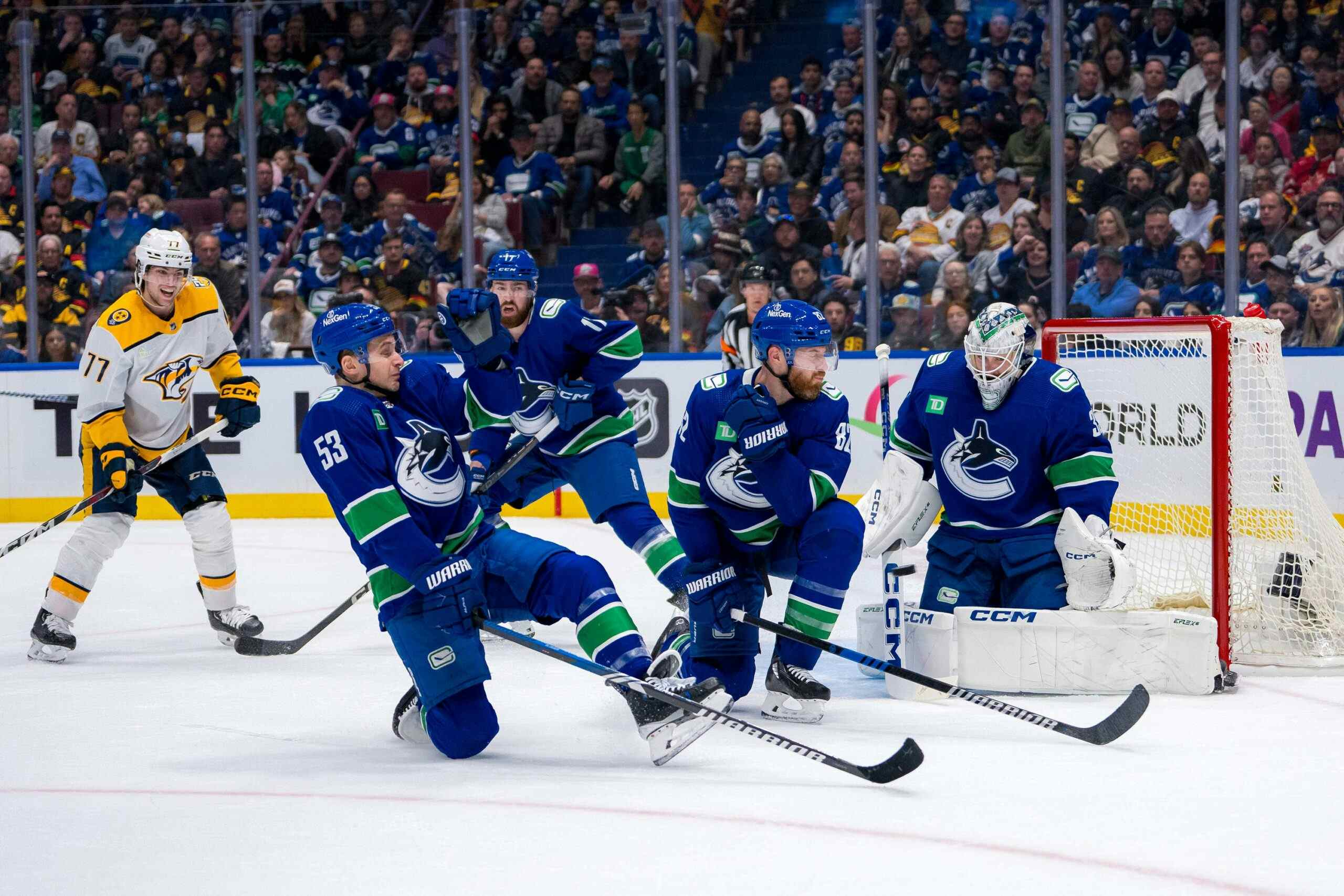The Case For Trading Down From 5th Overall
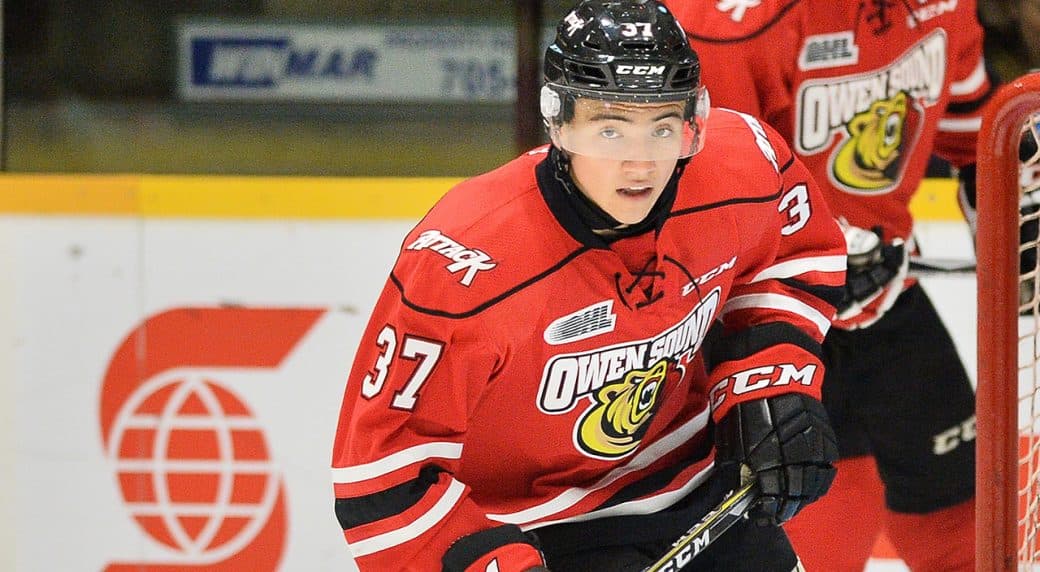
6 years ago
For the second year in a row, the Canucks left the NHL’s Draft Lottery disappointed. They say that behind every cloud there’s a silver lining, however, and the Canucks will be determined to make the best of an unfortunate situation.They can do this either by unearthing a diamond in the rough at fifth overall or by leveraging the pick they currently hold to accumulate more assets.
They can do this either by unearthing a diamond in the rough at fifth overall or by leveraging the pick they currently hold to accumulate more assets.
Based on the information we have at our disposal, the Canucks may be in a unique position to do just that. The 2017 NHL Entry Draft might not be as strong as the two that preceded it, but the fifth overall pick should still be a coveted item by at least a handful of teams under the right circumstances. And the Canucks, holding that pick, have the opportunity to trade down from it and leave the draft as victors.
Differences in Perception
The general consensus is that this is a weak draft. Entering the search terms “weak 2017 NHL draft” into any search engine churns out dozens of think pieces on the subject.
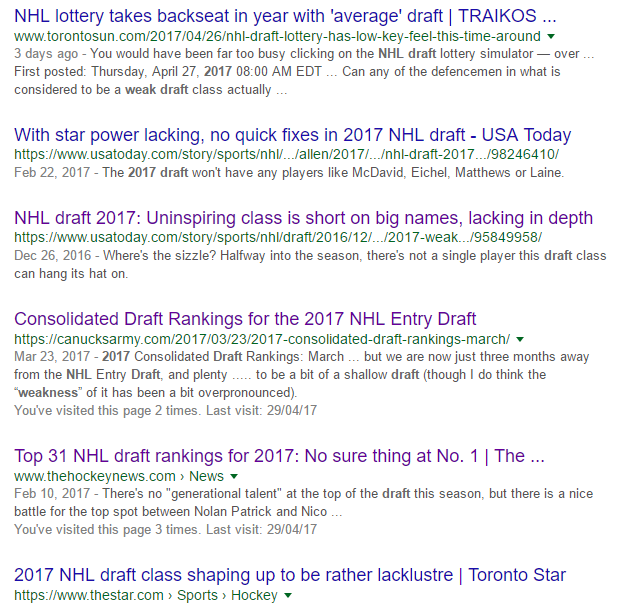
This line of thinking isn’t entirely wrong. It’s true that this year’s draft doesn’t have a generational player at the top — though there are few that do. It doesn’t even have a true can’t-miss prospect projected to go in the number one spot. And unlike the previous years, there aren’t a series of consolation prizes available for the teams that missed out on the chance at a top two pick. In fact, there appears to be very little consensus on who might be the best prospects available after Nolan Patrick and Nico Hischier.
Jeremy Davis has done wonderful work throughout the season consolidating the draft rankings of twelve major publications to create a list of each player’s average ranking.

There’s been a lot of variance across these publications, especially outside of the top two. For comparison, at approximately the same time last season, Shawn Reis’ consolidated rankings showed that no publication had any player in the top six ranked any lower than ninth. This year, some publications have players in the top six of the consolidated rankings ranked as low as 20th. Some of that variance may be due to Jeremy increasing the number of publications featured in these rankings, but that’s still a stark difference.
Taking Advantage
When viewed through the lens of draft analytics, the top end of this year’s draft is weaker than the prior two drafts, but those differences begin to even out towards the middle of the first round.
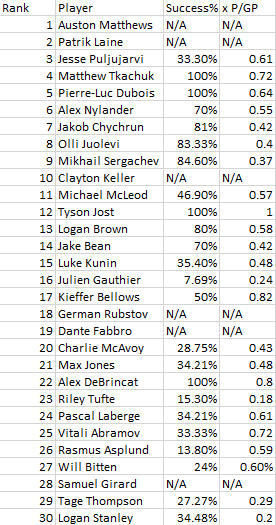

* It should be noted that sampling issues arise with pGPS, and that part of the reason Timothy Liljegren, Miro Heiskanen, and Erik Brannstrom all have a success % of 0% is due to only having a single match. It is also important to remember that pGPS is constantly being updated and refined, so-year-to-year numbers are subject to variance. At the end of the day, pGPS is meant to provide deeper statistical analysis into prospect analysis, not to be the sole basis behind a team’s draft strategy.
When we look at the success percentages and expected points per game of the top 30 players from last year’s consolidated rankings versus the most recent consolidated rankings, it’s clear that last year’s draft had a higher level of talent than the 2017 draft, but differences get less and less stark the further down the rankings you go. In other words, while the high-end of this year’s draft is worse than 2016’s was, that difference more or less washes out by the late first round.
Another notable element of this year’s draft is the high number of draft analytics darlings ranked near the end of the first round. This is something a savvy team could exploit by trading a below-average early first-rounder for additional assets while still getting a player of comparable value with their later first-round pick.
These are the CHL’s top scorers adjusted for secondary assists, era, age, and league (SEAL):
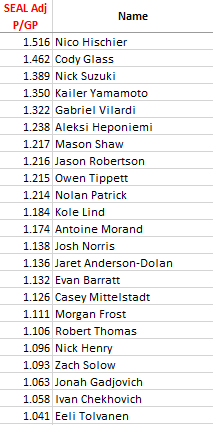
Some of the CHL’s best SEAL-adjusted scorers are ranked later in the first round, or outside of the top 31 entirely. Obviously, there’s a reason each of these players are ranked lower than their statistical profile suggests they should be. No player available outside of the top five in any given draft isn’t without his warts, but to quote Paul DePodesta is Michael Lewis’ Moneyball:
“what gets me really excited about a guy is when he has warts, and everyone knows he has warts, and the warts just don’t matter.”
Perhaps no two players better exemplify that line of thinking than Kailer Yamamoto and Nick Suzuki. Both players have scored at elite rates over their respective seasons and would be huge boons to the Canucks’ prospect cupboard. Both players also have warts, which is basically to say that they’re small. In Yamamoto’s case, his height of 5’7″ may be a legitimate hindrance to his ability to play in the NHL. Suzuki, on the other hand, is only slightly undersized by NHL standards at 5’11”, so if he’s unable to make it as an NHL regular, it will likely be for reasons other than size. Suzuki also compares very favourably to OHL alum Matt Duchene, who is the same height and scored at a similar pace to Suzuki in his draft year.
In a perfect world, the Canucks could trade down a few spots, take Suzuki, and recoup an extra pick or two in the middle rounds, perhaps taking a flyer on a forward like Kole Lind, Aleksi Heponiemi, or Mason Shaw, or a defenceman like Henri Jokiharju or Conor Timmins. What I would do is irrelevant, however. The point is that the variance in opinions about players is wide enough that the Canucks could feasibly trade back even as far as the early 20s and still get a player that’s very high on their board.
Conclusion
The average hockey fan has been duped into believing the 2017 draft is notably sub-par. What’s less clear is whether or not NHL GMs feel the same way. Obviously, the Canucks can’t make a trade without a partner.
It seems reasonable to assume there’s at least one general manager out there who’s eager to swoop into the top five and select a player that will be unavailable by the time his team makes their selection. If the Canucks can find such a partner, they should pull the trigger.
The best way to have success at the draft table is to load the chamber with as many bullets as you can, and Vancouver may be in a unique position to do just this without making a significant downgrade in talent with their first-round selection. If Vancouver chooses to go this route, they may be able to add more than just one or two high-end prospects in this year’s draft.

